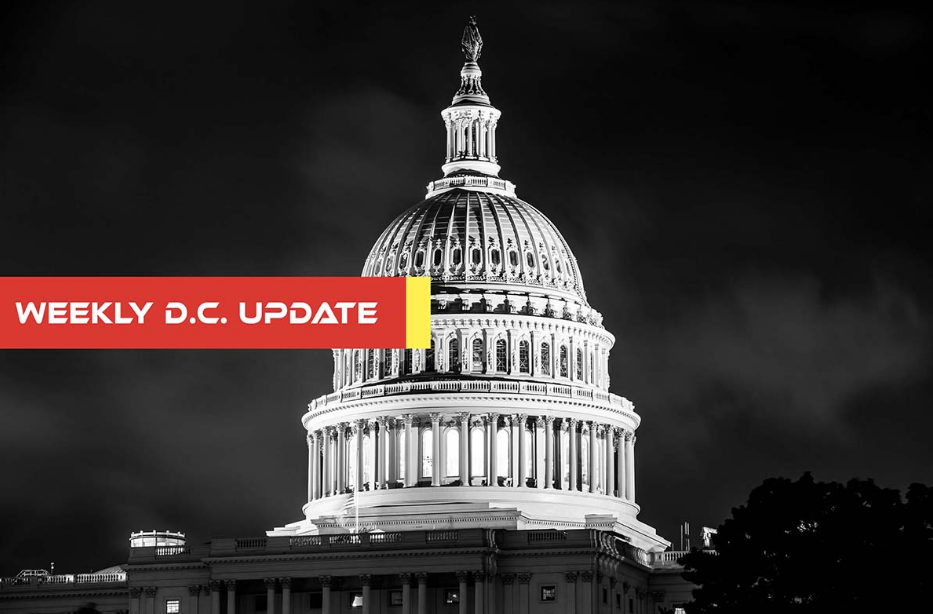
- Details
- By Native News Online Staff
WASHINGTON — In addition to articles already covered by Native News Online, here is a roundup of other news released from Washington, D.C. that impacts Indian Country recently.
Ten Tribes Sign Preservation Agreements with National Park Service
- Modoc Nation (Miami, OK)
- Kiowa Tribe of Oklahoma (Carnegie, OK)
- Lovelock Paiute Tribe of the Lovelock Indian Colony, Nevada (Lovelock, NV)
- Prairie Band Pottawatomi Nation (Mayetta, KS)
- Sac & Fox Tribe of the Mississippi in Iowa (Meskwaki Nation) (Tama, IA)
- Paskenta Band of Nomlaki Indians of California (Corning, CA)
- United Keetoowah Band of Cherokee Indians (Tahlequah, OK)
- Summit Lake Paiute of Nevada (Sparks, NV)
- Delaware Nation, Oklahoma (Anadarko, OK)
- Tule River Indian Tribe (Porterville, CA)
]NPS has the responsibility under the National Historic Preservation Act to administer the Tribal Historic Preservation Program. The program assists Indian tribes in strengthening their historic preservation programs managed through Tribal Historic Preservation Offices (THPO) on tribal lands. Once signed, THPO agreements transfer certain historic preservation responsibilities to Tribes that would otherwise be the responsibility of the state.
Ahead of MMIW Day of Awareness, Cortez Masto’s Bipartisan Bills To Support Tribal Communities Move Through Senate Committee
At a U.S. Senate Committee on Indian Affairs hearing, Senator Catherine Cortez Masto (D-Nev.) called for passage of her Bridging Agency Data Gaps & Ensuring Safety (BADGES) for Native Communities Act— bipartisan legislation to support Tribal law enforcement and curb the epidemic of missing and murdered Indigenous women (MMIW), ahead of MMIW Day of Awareness on May 5.
Senator Cortez Masto has been a strong supporter of Tribal communities and has passed two bipartisan bills, the Not Invisible Act and Savanna’s Act, to combat the MMIW crisis. The commission created by the Not Invisible Act specifically called for passage of Cortez Masto’s BADGES for Native Communities Act to help law enforcement better serve Native communities.
Senator Cortez Masto highlighted how her bipartisan bill will support the recruitment and retention of BIA law enforcement officers, bolster federal missing persons resources, and give Tribes and states tools to combat violence.
Department of the Interior Assistant Secretary of Indian Affairs Bryan Newland discussed how long wait times for background checks when hiring BIA law enforcement officers discourages qualified applicants. He expressed support for Cortez Masto’s bill by saying, “allowing us to have ownership of this process and making sure that the buck stops with us will…allow us to be more efficient and speedy” to recruit and retain officers.
Biden-Harris Administration Announces $71 Million to Electrify Tribal Homes with Clean Energy
The Department of the Interior on Wednesday announced the availability of $71 million in funding through President Biden’s Investing in America agenda to help Tribal communities electrify their homes. This investment is a critical step toward the goal of electrifying all homes in Indian Country with clean energy sources and advances the Biden-Harris administration’s work to reach a carbon-free electricity sector by 2035.
This is the second round of funding from the Office of Indian Affairs’ Tribal Electrification Program, part of an overall $150 million investment from the Inflation Reduction Act — the largest ever investment in combatting the climate crisis — to support the electrification of homes in Tribal communities. Secretary Haaland announced $72 million in awards from the first round of funding earlier this year.
“As the Interior Department implements this new program, we will continue to support Tribes as they work to develop their electricity infrastructure and help meet our shared clean energy goals,” said Secretary Haaland. “Through President Biden’s Investing in America agenda, we’re providing reliable, resilient energy that Tribes can rely on, and advancing our work to tackle the climate crisis and build a clean energy future.”
A key pillar of Bidenomics, the President’s Investing in America agenda is deploying record investments to provide affordable high-speed internet, safer roads and bridges, modern wastewater and sanitations systems, clean drinking water, reliable and affordable electricity, and good paying jobs in every Tribal community.
More Stories Like This
Native News Weekly (August 25, 2024): D.C. BriefsUS Presidents in Their Own Words Concerning American Indians
‘His stories can no longer be told.’ | Woman Pleads Guilty to 2016 Murder of Indigenous Master Woodcarver
Montana County Redraws District After Settlement to Ensure Chippewa Cree Votes Count
Tunica-Biloxi Council Member Named to Tribal Leadership Foundation
Help us defend tribal sovereignty.
At Native News Online, our mission is rooted in telling the stories that strengthen sovereignty and uplift Indigenous voices — not just at year’s end, but every single day.
Because of your generosity last year, we were able to keep our reporters on the ground in tribal communities, at national gatherings and in the halls of Congress — covering the issues that matter most to Indian Country: sovereignty, culture, education, health and economic opportunity.
That support sustained us through a tough year in 2025. Now, as we look to the year ahead, we need your help right now to ensure warrior journalism remains strong — reporting that defends tribal sovereignty, amplifies Native truth, and holds power accountable.
 The stakes couldn't be higher. Your support keeps Native voices heard, Native stories told and Native sovereignty defended.
The stakes couldn't be higher. Your support keeps Native voices heard, Native stories told and Native sovereignty defended.
Stand with Warrior Journalism today.
Levi Rickert (Potawatomi), Editor & Publisher


